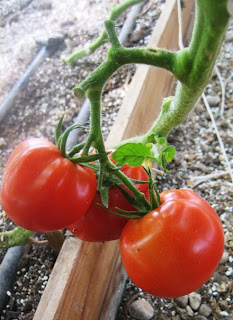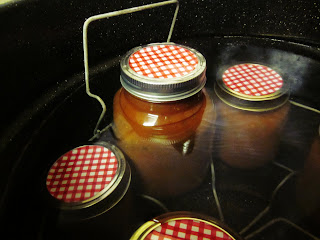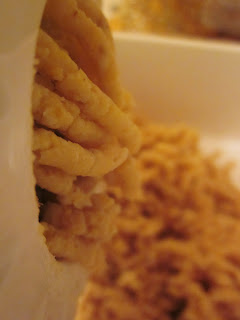Just over a month ago as I was walking into the NBC 12 studio here in Phoenix, a charming woman named Pat Sinclair was finishing up her Arizona Mid-Day Segment. I met her outside the studio and we started talking briefly, only to find a common passion as sisters in baking (oh laaaawd-koom-bye-yaaa...). We did not bust out our blocks of butter and nutmeg mills and set up base camp right there in the lobby (tempting as that might have been)...Oh be still my heart when she told me she had been on the show introducing her new book entitled "Scandinavian Classic Baking", and asked if I would be willing to read it. Could someone please pinch me now?! It was a pure stroke of Divine Intervention! Pat, who is a food consultant with almost 25 years experience in test kitchens and recipe development, was offering the Bakeresse more ammo to bake with?! What's not to love about that?
When the book arrived in the mail, I could hardly wait to pour over the many breathtaking photos and descriptions of this magnificent region. It felt like I was going home as I saw and read the many baking styles from country to country. Why did it feel like home?
I'll tell you why. When my mother, born and raised of almost pure Danish descent brought home a Swedish-English fiancée...it could have ended badly. However, Dane's are know for their stubborn streaks, and mom was not an exception to that rule. She knew a good thing when she had it. I was born a few years later to both parents of Scandinavian decent. There it is folks. I am a Scandinavian Classic Baker! Pat Sinclair meeting me at the channel 12 studio was not just an accident. Her book of heirloom quality recipes falling into my hands has been like a breath of heaven. In fact, each new page and recipe made my heart almost sing. I wanted to jump a flying leap out of my chair, grab a wedge of Land-o-Lakes...I digress. The final kicker was near the end of the book. Aebleskivers. Moment of silence for the fat little Danish fingers of my childhood...daggumit. I love those little puff balls of love. What are they? Well, they're pure fluffy golden heaven in a swirly-whirly butter fried mass of joy. Lightly crisp on the outside with almost a popover note. I used to eat them until I could see them in my sleep. *Used to* being the operative. Dang diets. Now we eat them on Christmas and birthdays.
Danish grandmother Dorothy, mother of eleven children gave my mother a family heirloom aebleskeiver pan.
Grandmother's Aebleskiver pan passed from mom's hands to mine at the time of my wedding. She shared her secrets to perfect Danish aebleskivers at the time as well. So, imagine my joy when I saw Pat's cookbook include a recipe of authentic Danish Aebleskivers! They are not just pancakes. They're almost a cross between a popover and a pancake. The flavor is mild and the texture should be exceptionally light and slightly sweet. The secret is the method.
The spelling is usually aebleskiver or ebleskiver. I saw some version of my beloved æbleskiver being sold with a commercially changed pan, It was branded as "Pancake Puffs" and stuffed with all kinds of filling...but truth be known, it wasn't grandma's recipe. Not even close. It was just a pancake. I'm a pure freak. Pure freak. If you're calling it a classic, it better dang-tootin' be a classic. This one is. Pat Sinclair...you're my hero!
Danish Aebleskiver from
Classic Scandinavian Baking by Pat Sinclair
yield 35 pancake balls
4 large eggs, separated
2T sugar
2 cups All purpose flour
1 tsp baking powder
1/2 tsp salt
2 cups 2% milk
1/4 cup butter, softened
confectioners sugar
applesauce if desired
Whisk the egg yolks and sugar until foamy. Combine the flour, baking powder and salt in a medium bowl. Add the flour and milk to the egg yolks and whisk until smooth.
Beat the egg whited in a large bowl with the electric mixer on high speed until soft peaks form. When you lift the beater, the whites will make peaks that fold back slightly.
Gently fold the egg whited into the batter until smooth. (Pat's book has a great tutorial on how to fold).
Get out great-great grandma's pan. Try not to cry. Remember you're loved...
Heat aebleskiver pan over medium heat until drops of water sizzle. (You can use any ol' aebleskiver pan.)
Place about 1/4 tsp butter in each cup. Add about 1/4 cup batter in each cup. Each cup will be about 3/4 full.Pat uses a knitting needle to turn over her aebleskivers...I use one of these chop stick thingies...
Cook 1-2 minutes until bottom half is brown. Use the knitting needle (or chop stick) to slowly turn the balls to cook the other sides. Balls are done when a wooden pick inserted in the center comes out clean.
Turn out pancake balls onto plate and keep warm in a low oven.
Dust with powdered sugar and serve warm
Be it braided breads or tarts, muffins or rolls...Pat Sinclair has won perhaps forever, my loyalty and love for her attention to detail and her wonderful book. Thank you Pat. From one baker to another...you have truly inspired! Anyone would be blessed to have this classic baking book in their home. Especially, however, anyone with an appreciation for the baking of the Scandinavian region. It really is an outstanding book. Chef Tess Bakeresse Pulla Braid approved!
Once again, special thanks to Pat Sinclair who is a food consultant with almost 25 years experience in test kitchens and recipe development. Her newest cookbook, Scandinavian Classic Baking was published by Pelican Publishing in Spring 2011. Her first cookbook "Baking Basics and Beyond", published by Surrey Books, has been presented the Baking Cookbook Award for 2007 by the Cordon d’Or- Gold Ribbon Award International Annual Cookbooks and Culinary Arts Program. She has worked for corporate clients Land O'Lakes, Pillsbury and General Mills. She is currently working on her second cookbook, "The Ultimate Empty Nesters Cookbook". She also teaches cooking classes in the Twin Cities.
Buy Scandinavian Classic Baking here



































































